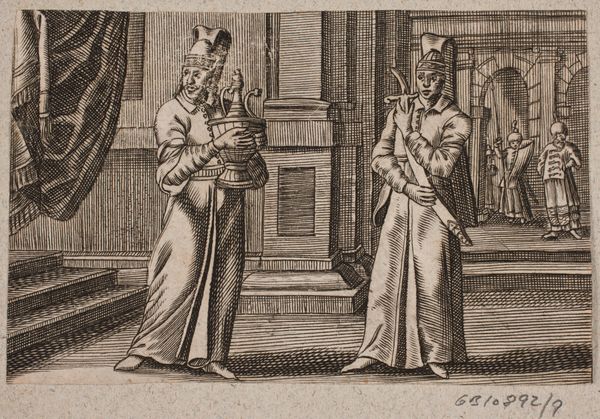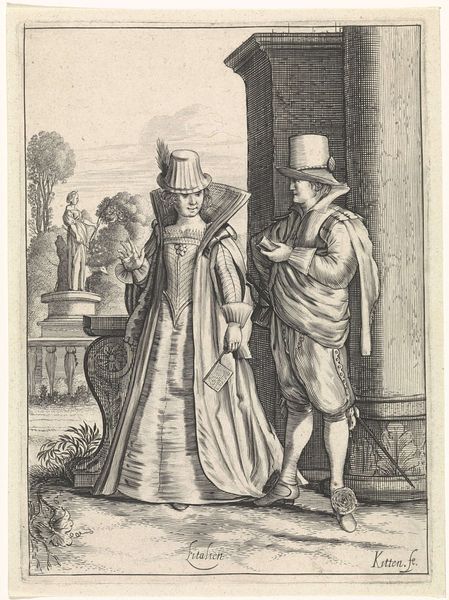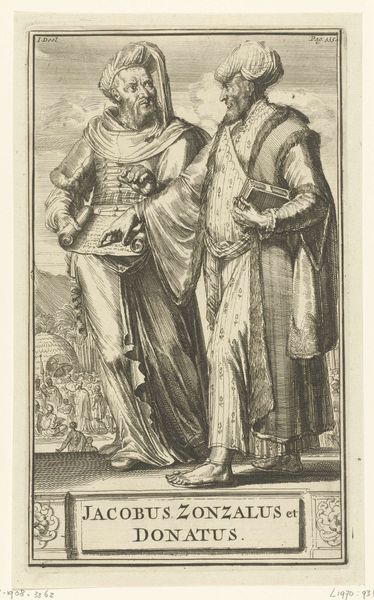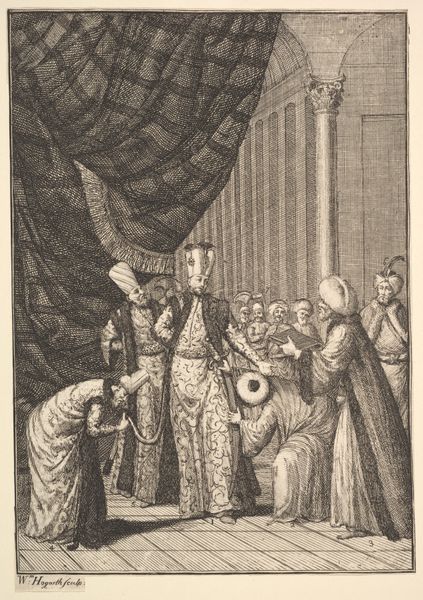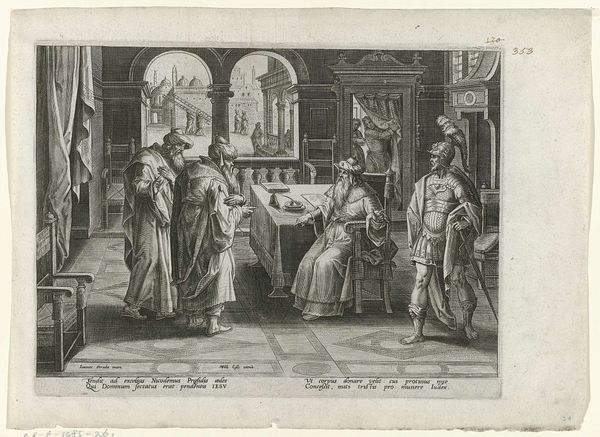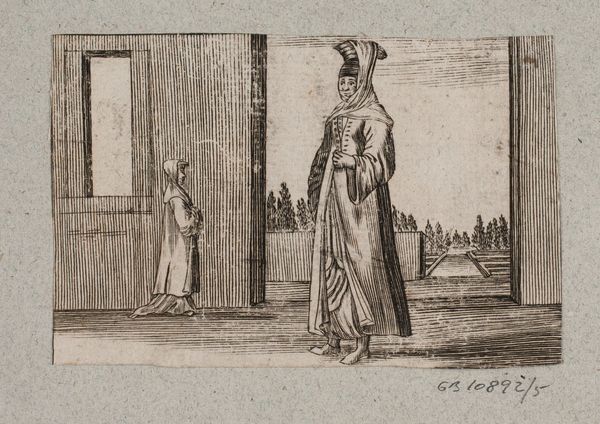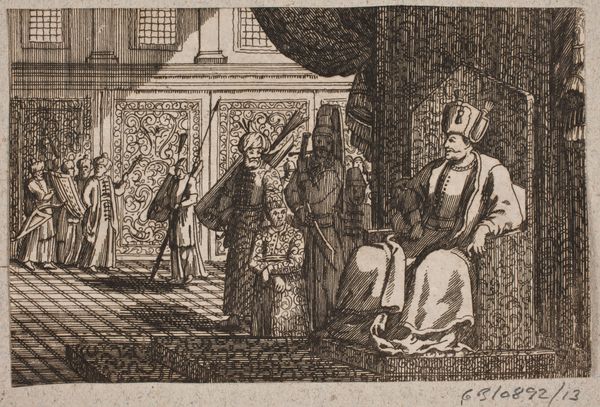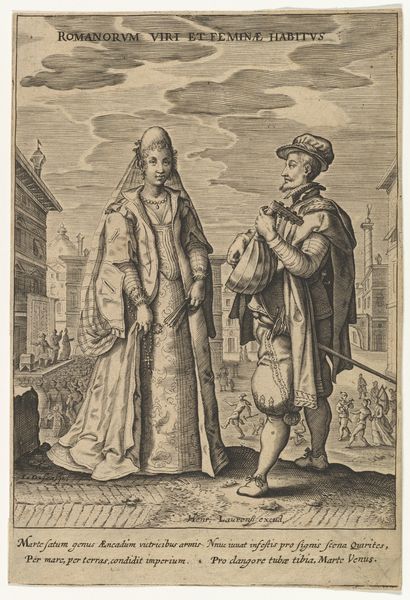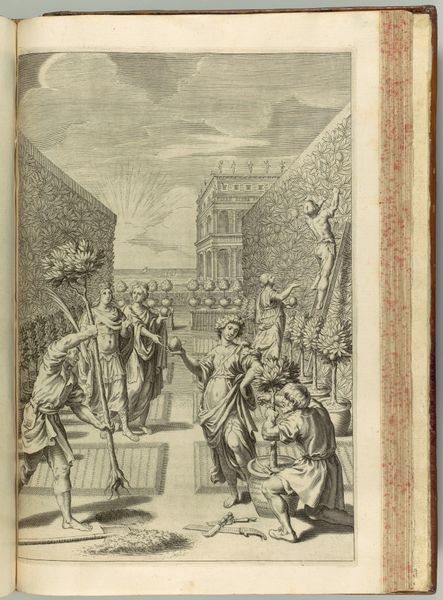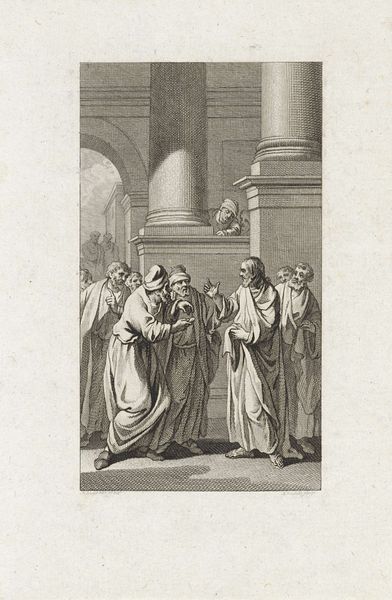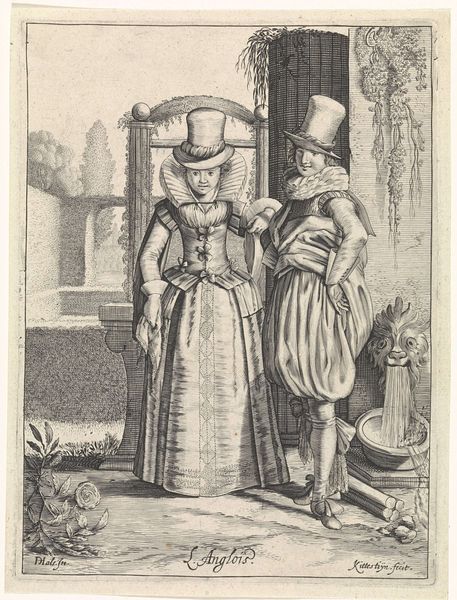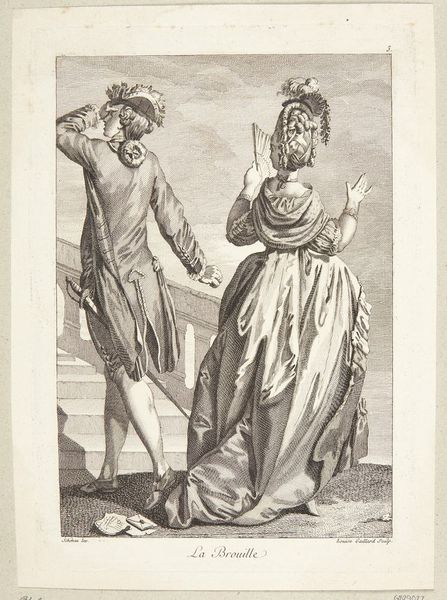
En falkonér og en tyrkisk tjener i en døråbning. I baggrunden en ridderturnering 1600 - 1700
0:00
0:00
print, engraving
#
baroque
# print
#
genre-painting
#
history-painting
#
engraving
Dimensions: 75 mm (height) x 117 mm (width) (bladmaal)
Curator: Look at this intriguing engraving from the 17th century. It's called "A Falconer and a Turkish Servant in a Doorway. In the background a Knight Tournament". It’s by an anonymous artist and resides in the Statens Museum for Kunst. Editor: My initial reaction is of staged grandeur, almost like a play within a print. The two figures in the foreground command attention, yet the tournament happening behind them pulsates with far more life and immediacy. It seems strangely dissonant. Curator: Precisely. Note the careful use of line and composition to establish this division. The foreground is all strict verticality and contained shapes in the robes, with clear definition outlining each form and separating them distinctly, framing, essentially, the dynamic scene in the background. Editor: I am curious about the materials and labour required to produce such an image during that time. What sociopolitical implications do we glean when reproducing this image using metal and ink, with multiple impressions created from a single etched plate? Is this meant for mass distribution or commissioned as decor for a patron of wealth? Curator: Well, the scale alone, indicative of printmaking traditions during this era, offers intriguing access to Baroque art as a mode of storytelling—disseminated more democratically beyond painting and other traditionally prioritized art forms for wealthy benefactors. The very act of depicting a tournament speaks volumes about desired ideals. Editor: And to couple that narrative with, notably, two individuals from differing class or social strata within a domestic setting. In whose dwelling is the tournament transpiring? What purposes did prints such as this provide? Curator: Indeed. Perhaps this artwork seeks to underscore the relationship of social stratifications against scenes of grandiose tournaments? Consider the meticulous execution of engraving that highlights specific aspects of power relationships in society during the Baroque period. It's as though the artist utilizes spatial arrangements to communicate status in society. Editor: Right. I look beyond the immediate portrayal into the methods of its making, its means of reproduction and accessibility during this particular period of societal construct. Curator: In that, you also discover how the artistic arrangement informs the thematic tensions prevalent throughout its construction, its visual cues revealing hierarchical significance. It invites contemplation, even to this very day. Editor: Precisely. The material tells of something far more telling than the immediate aesthetic experience provides. The historical construction matters to understanding even its visual impact.
Comments
No comments
Be the first to comment and join the conversation on the ultimate creative platform.
